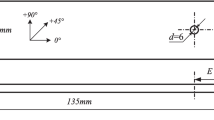Abstract
Angles are frequently used for lateral bracing and as truss members. Such members normally have eccentric connection and the nonuniform stress distribution due to shear-lag effect which reduces the section efficiency of tension member. Past researches on the netsection capacity have been focused primarily on the shear-lag effect according to connection eccentricity and connection length on angle. However, recent literatures on angle bolted connection have shown that bending effects induced from connection eccentricity have the potential to significantly reduce the strength of angle connection. Moreover, curling (out-of-deformation) effect that occurs in specimens with relatively long end distance would be critical factor for the failure capacity of angles. This paper presents a study of the shear-lag effects on angle bolted connection with aluminum alloys. Test parameters include thickness and width of angles. Lastly, the reliability estimation on various design specifications for net-section tensile capacity was conducted.
Similar content being viewed by others
Abbreviations
- b :
-
angle width
- d :
-
nominal bolt diameter
- e :
-
end distance in the direction of loading
- L :
-
connection length
- P ue :
-
ultimate strength obtained from test
- U :
-
reduction factor
- W c :
-
width of connected leg
- W u :
-
width of unconnected (outstanding) leg
- \(\bar x\) :
-
eccentricity of the connection in the x-axis direction
References
Kim, T. S., Kuwamura, H., and Cho, T. J., “A Parametric Study on Ultimate Strength of Single Shear Bolted Connections with Curling,” Thin-Walled Structures, vol. 46, no. 1, pp. 38–53, 2008.
Cho, Y. H., Kim, S. H., and Kim, T. S., “Structural Behaviors and Curling Influence of Single Shear Bolted Connections with Aluminum Alloys (7075-T6),” Int. J. Precis. Eng. Manuf., vol. 15, no. 1, pp. 183–187, 2014.
Dornfeld, D. A., “Moving Towards Green and Sustainable Manufacturing,” Int. J. Precis. Eng. Manuf.-Green Tech., vol. 1, no. 1, pp. 63–66, 2014.
AISC-LRFD, “Load and Resistance Factor Design Specification for Structural Steel Building,” 2005.
AISI, “North American Specification for the Design of Cold-Formed Steel Structural Members,” 2001.
The Aluminum Association, “Aluminum Design Manual,” 2010.
Teh, L. H. and Gilbert, B. P., “Net Section Tension Capacity of Equal Angle Braces Bolted at Different Legs,” Journal of Structural Engineering, vol. 140, no. 6, Paper No. 06014002, 2014.
Kulak, G. L. and Wu, E. Y., “Shear-lag in Bolted Angle Tension Members,” Journal of Structural Engineering, vol. 123, no. 9, pp. 1144–1152, 1997.
Author information
Authors and Affiliations
Corresponding author
Rights and permissions
About this article
Cite this article
Cho, Y., Kim, T. Ultimate strength and shear-lag effect of aluminum alloy (6063-T5) bolted angle connections. Int. J. Precis. Eng. Manuf. 16, 1681–1684 (2015). https://doi.org/10.1007/s12541-015-0221-z
Received:
Revised:
Accepted:
Published:
Issue Date:
DOI: https://doi.org/10.1007/s12541-015-0221-z




